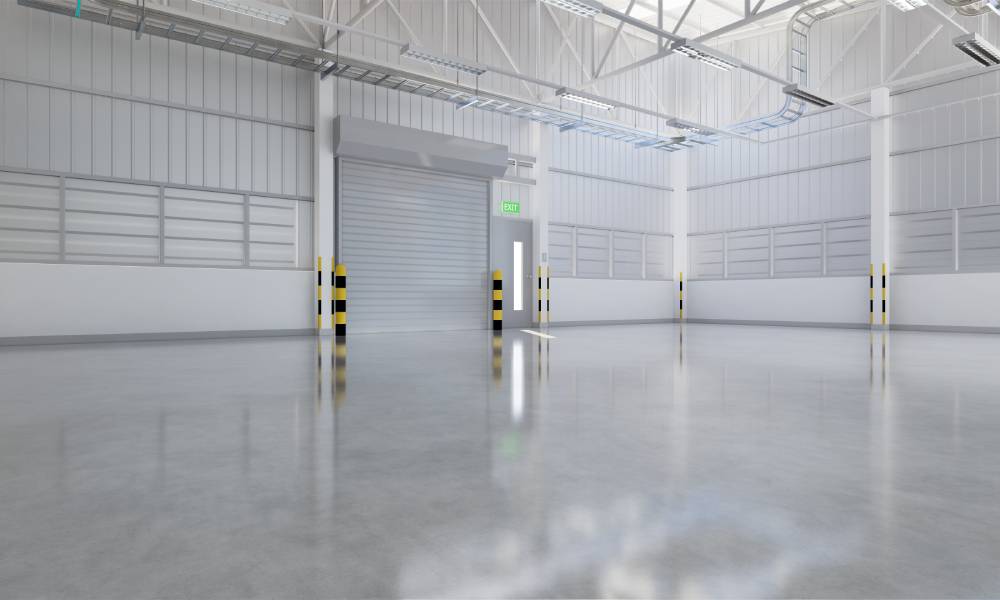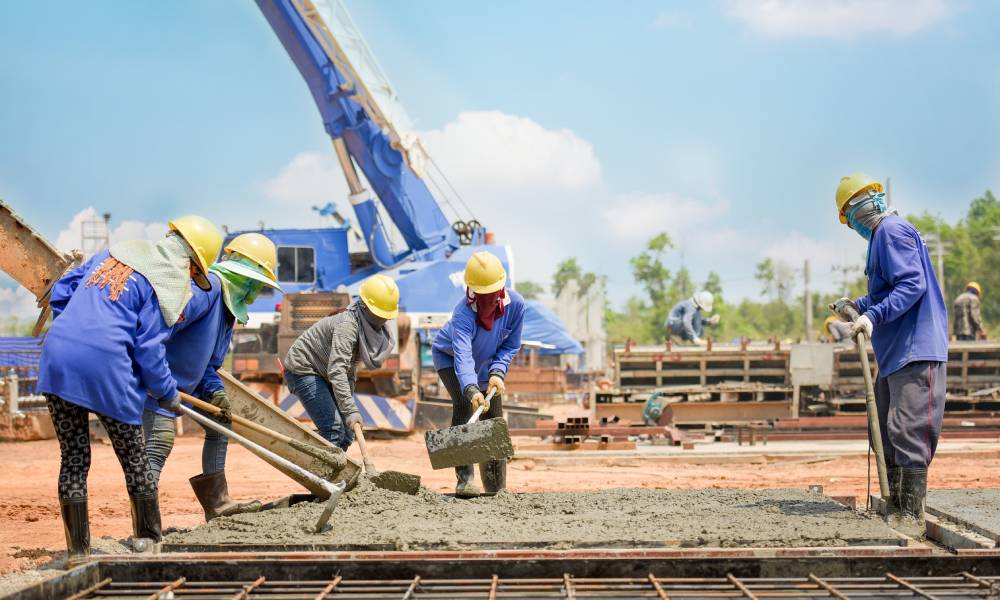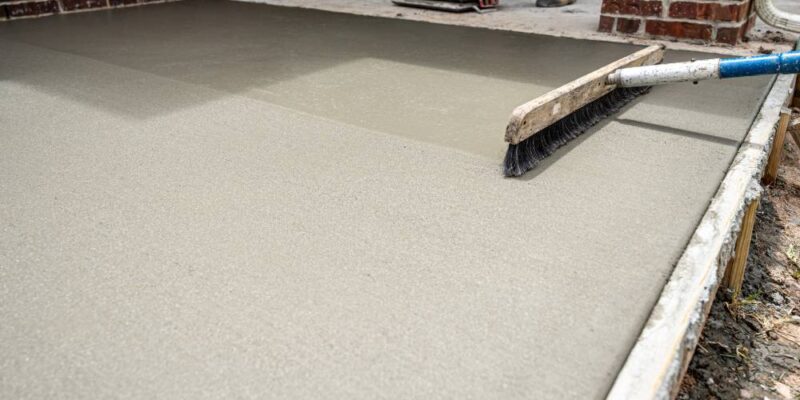Understanding concrete surface profiles is crucial for contractors working on flooring projects. A concrete surface profile refers to the texture or roughness of a concrete surface after preparation, which significantly affects the adhesion and performance of flooring applications.
Let’s dive into what you should know about concrete surface profiles—their importance, different types, and everything else you need for a successful project.
The Importance of Understanding Concrete Surface Profiles
Concrete surface profiles play a pivotal role in the success of flooring installations. Properly prepared concrete surfaces enhance the bond between the substrate and the flooring material, ensuring a longer lifespan and better performance.
Flooring materials may not adhere correctly without an adequate surface profile, leading to premature failures, such as delamination, cracking, or peeling. By mastering the nuances of concrete surface profiles, contractors can deliver high-quality, durable flooring solutions that meet their clients’ expectations and withstand the test of time.

Types of Concrete Surface Profiles
Concrete surface profiles can fit into three primary types: rough, smooth, and textured. Each type serves specific purposes and is suitable for different applications.
Rough Surface Profiles
Rough surface profiles provide a high degree of mechanical bonding for thick coatings, overlays, and toppings. These profiles come about through methods such as shot blasting, scarifying, or grinding with coarse abrasives. Rough profiles are essential for industrial floors subjected to heavy loads or frequent traffic.
Smooth Surface Profiles
Smooth surface profiles are ideal for thin coatings, sealers, and polished concrete finishes. Achieving a smooth profile typically involves fine grinding or honing the concrete surface. Smooth profiles are suitable for environments where aesthetics and ease of maintenance are priorities, such as commercial offices, retail spaces, and residential interiors.
Textured Surface Profiles
Textured surface profiles offer a balance between rough and smooth profiles, providing sufficient mechanical bonding while maintaining a degree of aesthetic appeal. Textured profiles commonly come from specialized tools or techniques like troweling, broom finishing, or using textured rollers. These profiles are often for settings that require slip resistance and visual appeal, such as outdoor walkways, pool decks, and public spaces.
Application of Concrete Surface Profiles in Various Settings
Concrete surface profiles are in a wide range of settings, each with unique requirements and challenges. Here, we’ll explore some common scenarios where understanding and implementing the right surface profile is crucial.
Industrial Settings
Concrete surfaces must handle heavy machinery, chemical spills, and constant wear and tear in industrial environments. Rough surface profiles are essential in these settings to ensure that thick coatings, such as epoxy or polyurethane, adhere properly and provide long-lasting protection against abrasion, impacts, and chemical damage.
Commercial Spaces
Commercial spaces, including offices, retail stores, and hospitality venues, often prioritize aesthetics and ease of maintenance. Smooth surface profiles are ideal for these settings. They allow for polished concrete finishes or thin decorative coatings that enhance the visual appeal while being easy to clean and maintain.
Public Areas and Outdoor Spaces
Public areas, such as sidewalks, plazas, and recreational facilities, require durable and slip-resistant surfaces. Textured surface profiles strike the perfect balance, providing the necessary traction to prevent slips and falls while maintaining an attractive appearance. Techniques like broom finishing or stamping can create various textures to meet specific design requirements.

Enhance the Durability and Longevity of Floors
Concrete surface profiles are critical in achieving durable and long-lasting flooring systems. Properly profiled surfaces enhance the adhesion of coatings, overlays, and toppings, preventing issues such as delamination and cracking. Here’s how different surface profiles contribute to the overall durability of flooring systems:
- Improved adhesion: Adequate surface roughness ensures that the bonding agents can penetrate the substrate, creating a strong mechanical and chemical bond. This prevents premature failures and extends the lifespan of the flooring system.
- Resistance to wear and tear: Rough and textured profiles provide additional resistance to abrasion and impacts. This makes them ideal for high-traffic areas and industrial settings where the floors must withstand heavy loads.
- Chemical resistance: In environments with chemical exposure, such as laboratories or manufacturing facilities, a properly profiled surface enhances the performance of chemical-resistant coatings. This ensures that the flooring system remains intact and functional.
- Aesthetic appeal: Smooth and textured profiles are customizable. It’s possible to achieve various decorative effects, enhancing the visual appeal of commercial and residential spaces while maintaining their functional integrity.
How Contractors Can Achieve Desired Surface Profiles
Achieving the desired concrete surface profile requires a combination of the right tools, techniques, and expertise. Here are some practical steps contractors can take to ensure successful surface preparation:
- Assess the existing surface: Begin by evaluating the condition of the concrete substrate. Identify any cracks, spalling, or contaminants you need to address before profiling.
- Select the appropriate method: Choose the profiling method based on the desired surface profile and the project’s specific requirements. Common methods include shot blasting, grinding, scarifying, and acid etching.
- Use proper equipment: Invest in high-quality equipment and tools designed for concrete surface preparation. Maintain the machinery well and ensure trained professionals operate it to achieve consistent results.
- Follow industry standards: Adhere to industry standards and guidelines, such as those from the International Concrete Repair Institute (ICRI). Doing so will ensure the surface profile meets the required specifications.
- Test and verify: Conduct tests to verify the surface profile before applying coatings or overlays. Use tools like surface-profile gauges or replica tape to measure the roughness and ensure it meets the project’s requirements.
- Training and certification: Invest in ongoing training and certification programs for your team to stay updated on the latest techniques and best practices in concrete surface preparation.
Concrete Surface Profiles Unveiled
Understanding concrete surface profiles is essential for contractors aiming to deliver high-quality, durable flooring solutions. By mastering the different types of profiles and their applications in various settings, contractors can ensure that their projects meet the highest standards of performance and longevity.
Proper surface preparation enhances the bond between the substrate and the flooring material and contributes to improved resistance to wear, impacts, and chemicals.
If you’re looking for South Florida floor removal services, contact National Floor Solutions. We offer expert guidance and support to help you achieve your projects’ desired concrete surface profiles. Reach out to us to learn more about how we can assist you in delivering exceptional results.

